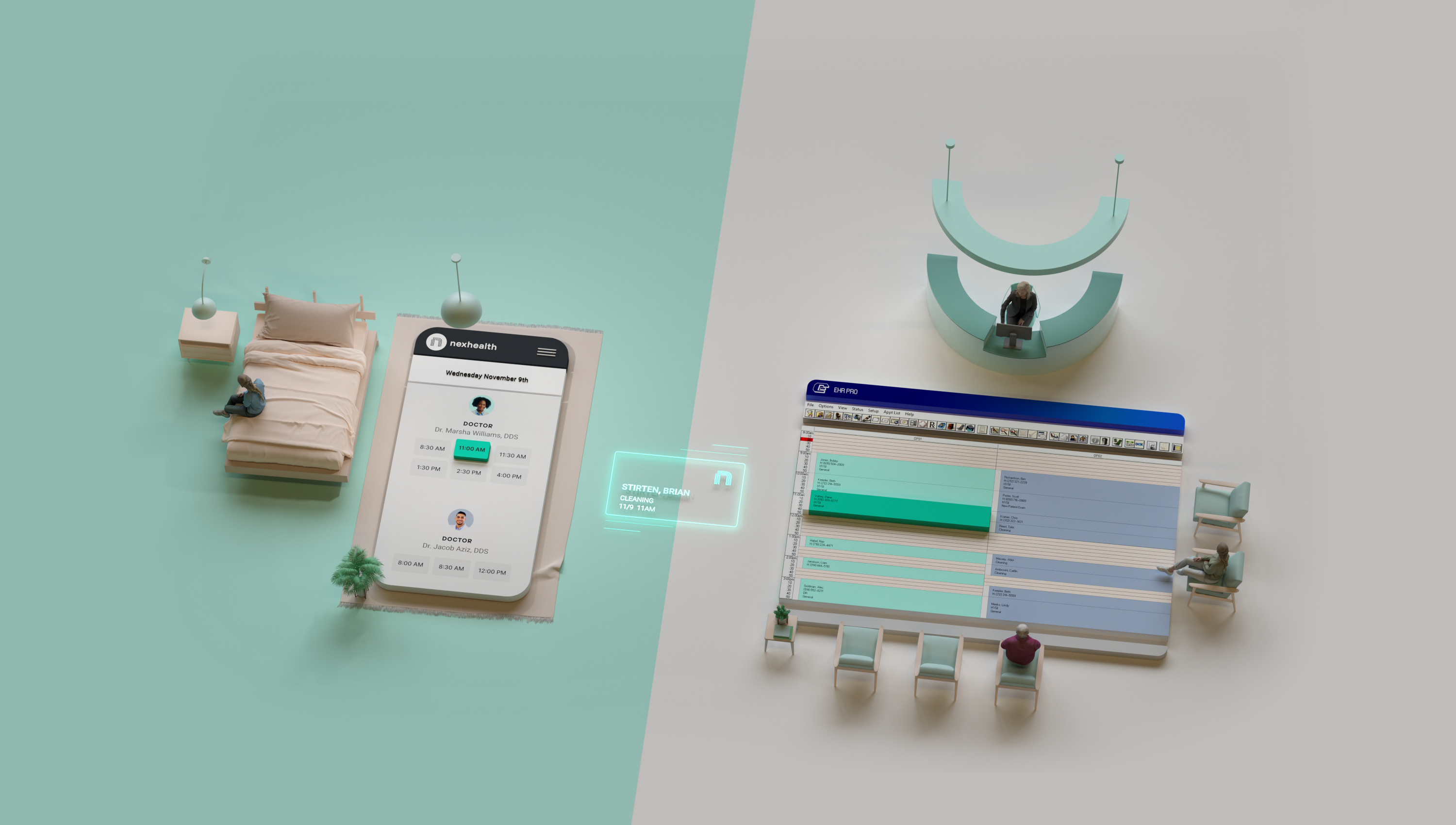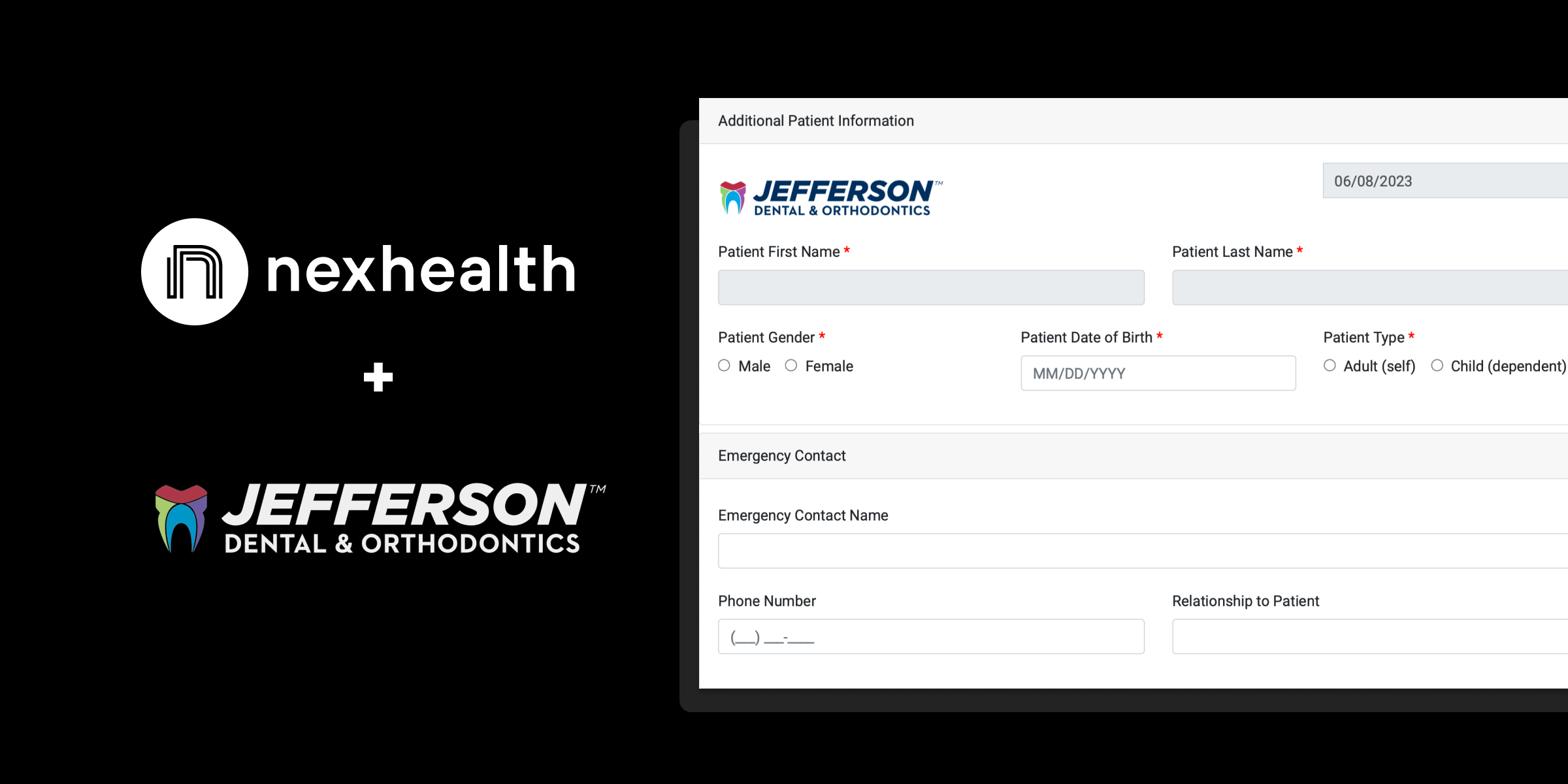July 2023 Release
We’re excited to announce the NexHealth Partner Program, a new way of promoting Synchronizer-integrated apps to our install base of 8,000+ dental and medical locations. We’ve also got details on the latest Synchronizer API product updates, as well as the story of how a leading dental service organization (DSO) uses the Synchronizer API to connect internal systems.
Partner with NexHealth to reach more practices

We’re launching the NexHealth Partner Program to help developers find more customers. We now have more than 8,000 dental and medical locations using the Synchronizer, and the NexHealth Partner Program will highlight Synchronizer-integrated apps to these practices for the first time.
It’s a win-win for accelerating innovation in healthcare. Practices get the benefit of new technology that’s easy to integrate, and our partners get more customers.
If you’d like to join the NexHealth Partner Program, please reach out.
Synchronizer API product updates

We’re also continuing to enhance the Synchronizer API to support new health record systems and use cases:
athenahealth
- We’ve added Synchronizer API support for athenahealth so developers can sync with that EHR using the same endpoints that already support other systems like DrChrono and eClinicalWorks.
Appointment cancellations
- We’ve enhanced our sync with Open Dental and Denticon to capture appointment cancellations faster and more reliably.
- If your app includes patient messaging, this will help you avoid triggering pre-appointment messages to patients who have canceled their appointment.
- It can also help your app know when to send notifications to waitlist patients if there is a last-minute cancellation that creates a calendar opening.
Form inserts
- We’ve improved the reliability of form inserts for Dentrix Ascend. If you’re using our Forms endpoints to sync completed forms to Dentrix Ascend, you will encounter fewer failed inserts.
How a leading DSO uses the Synchronizer API

As DSOs adopt new tools for the patient experience, it’s hard to keep that software in sync with the practice management systems that power day-to-day office operations. This can result in practice staff having to copy data between different software and developers having to build one-off integrations to connect disparate systems.
Jefferson Dental & Orthodontics solved these problems using the Synchronizer API. They automated patient form intake by syncing their patient messaging tools, Salesforce and Podium, with their practice management systems. They did this in just 4 weeks because they didn’t have to build and maintain custom integrations to Dentrix Enterprise and Dolphin — instead, they used the Synchronizer API to connect with both systems so they can read appointment data to trigger patient form requests.
Check out the full case study, and reach out if you’re a DSO interested in using the Synchronizer API to connect internal systems or build custom applications.
Updated API rate limits
The Synchronizer API uses rate limiting to safeguard against bursts of incoming traffic to help maximize its stability. Developers who send many requests in quick succession may see error responses that show up as status code 429.
We recently updated our rate limiting for each API key to the following:
- 20,000 requests per 10 seconds
- 100,000 requests per 2 minutes
- 1,000,000 requests per 1 hour
You can request a higher quota by emailing us at [email protected].